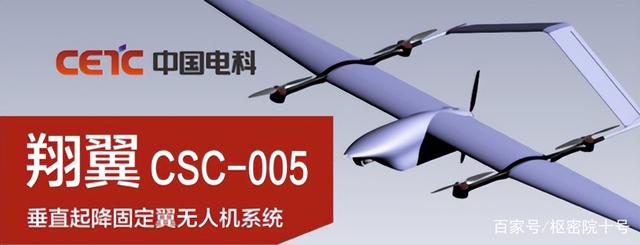The U.S. aircraft carrier is famous for its complete configuration of carrier-based aircraft, ranging from fighter jets, electronic attack aircrafts early warning aircrafts to helicopters and transport aircrafts. It greatly increases the strike range of US navy. But what the United States did not expect is that although the Chinese navy has just started in the use of aircraft carriers, it has taken the lead in equipping the domestic aircraft carrier Shandong with a drone swarm. Compared with the MQ-25 fighting alone, the drone swarm on the Chinese aircraft carrier obviously represents a higher level of future naval warfare.
The US “Dynamic” website said on June 2nd that photos circulating on social media showed a large number of drones appearing on the flight deck of the Shandong. “Although the lack of resolution makes it impossible for the outside world to confirm its specific model, it is certain that the Chinese navy is very enthusiastic about using drone swarms in naval warfare.”
Photos recently appeared on Weibo Chinese social media outlet that appeared to show at least two types of drones with vertical take-off and landing capabilities on the deck of the Chinese aircraft carrier Shandong, the report said. At least one of the photos has a CCTV-7 logo showing the drone in flight. This proves the authenticity of the photo to a certain extent.

What confuses the American media is, when were these photos taken? In April this year, the Shandong ship went to Dalian Shipyard to start the first planned availability improvement maintenance. “Satellite photos show that the Shandong ship was still at the Dalian Shipyard until May 26, and there were no military aircraft on the deck at this time.”
If these photos were taken before, Chinese aircraft carriers may have been equipped with drone swarms much earlier than expected.
“In any case, the photos of Chinese aircraft carriers carrying these drone swarms are significant.”
The report admits that the low resolution of the photos of the drones on the Shandong ship’s deck and the lack of other information make it difficult for the outside world to determine the specific models of these drones.

The report speculates that three of the drones on the flight deck of the Shandong ship in the photo appear to have front propellers and flat T- or H-shaped tails. The other 4 appear to have propulsion propellers and twin tails with inverted V connections.

Based on these characteristics, the US media speculated that the former may be the CW-20 drone of Chengdu-based China Zongheng Co., Ltd. (JOUAV). It was noticed that the company’s official website said that Zongheng Co., Ltd. was established in 2010, focusing on the research and development, production, sales and service of industrial drone-related products. It is the first domestic drone-based business to go public ‘s enterprise.
“Zongheng Dapeng CW-20, a small and medium-sized gasoline-electric hybrid VTOL fixed-wing UAV, was designed in 2015. This UAV focuses on high reliability, high efficiency and high precision, and is mainly suitable for small and medium-sized missions. Operation.”
Relevant data shows that the CW-20 has a fuselage length of 1.8 meters, a wingspan of 3.2 meters, a maximum take-off weight of 25 kilograms, and an operating range of up to 35 kilometers through radio command.
One of the biggest features of the CW-20 is that it can take off and land vertically as well as fly horizontally, with a maximum mission load of 2-3 kg. It has a battery life of 180 minutes, a cruising speed of 100 kilometers per hour, a wind resistance level of 7, a practical ceiling of 4,500 meters, and a maximum take-off altitude of 3,500 meters.

Another UAV on the Shandong ship appears to be a CSC-005 fixed-wing and quad-rotor hybrid UAV from China Electronics Technology, according to the website “Dynamics”. It has an optoelectronic/infrared sensor and a laser rangefinder, with a maximum take-off weight of about 21 kg and a maximum active radius of about 50 km.

However, the report admits that given that there are several other manufacturers in China producing similar types of drones, which are roughly comparable in size and capabilities to the CW-20 and CSC-005, the specific models of these drones have not yet been finalized.
It was noticed that the US media admitted that just looking at the performance indicators of these drones, they are not high-end drones. UAVs with vertical take-off capabilities can be used to transport limited quantities of cargo, including critical spare parts or medical supplies, between different ships in an aircraft carrier formation, the report said. The U.S. Navy has attempted to use such drones for related missions last year.
In addition, these small UAVs may also serve as “imaginary enemies” for Chinese aircraft carriers to test their defense capabilities against small UAVs, which are becoming a growing threat to navies.
But what concerns the US media is that this is not the first time the Chinese navy has been observed taking off commercial or derived hybrid vertical take-off and landing drones from its ships. “They could offer clear potential advantages for Chinese carriers such as Shandong. This includes providing surveillance against various threats around the carrier, or providing additional situational awareness to carrier strike groups. Additionally, through collaborative operations, especially as a fully networked part of a swarm of drones that can clear large areas around a carrier relatively quickly.”
Whether it is swarm drones for joint operations or the use of small vertical take-off and landing drones to transport cargo, the United States has proposed it many years ago, but the progress is relatively slow, so that it took the lead in appearing on the Chinese aircraft carrier. Here we can think of the phrase that Chinese military fans often say today, “The United States is responsible for fantasy, and China is responsible for realization.”

